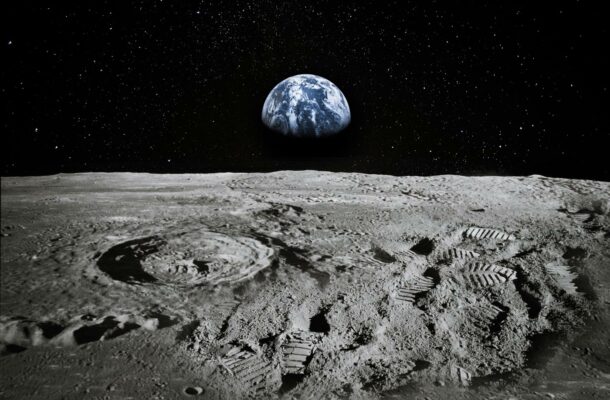Dive into the groundbreaking research revealing that the Moon's age surpasses previous estimates by 40 million years, shedding new light on its pivotal role in the Earth's evolution. Explore the findings from the Apollo 17 mission's lunar samples, unraveling the intricate history and formation of Earth's beloved satellite, the Moon.
Introduction:
In a remarkable breakthrough reshaping our understanding of the universe's evolution, recent research has unveiled that the Moon's age might surpass previous estimates by a staggering 40 million years. Delving into the intricacies of the Apollo 17 mission, NASA's last manned expedition to the lunar surface in 1972, a team of dedicated researchers, led by the Field Museum of Natural History and the University of Chicago, meticulously analyzed lunar crystals at the atomic level, unraveling the enigmatic history and formation of one of Earth's most beloved celestial companions, the Moon. As the implications of this groundbreaking revelation reverberate through the scientific community, the Moon's pivotal role in shaping the Earth's evolutionary trajectory emerges as a central focal point, underscoring the celestial body's profound influence on crucial terrestrial phenomena, from the planet's spin axis stabilization to the ebb and flow of tides.
A Celestial Time Capsule: Unveiling the Moon's Enigmatic Origins
The intriguing discoveries emerging from the meticulous analysis of moon crystals, brought back to Earth by the Apollo 17 mission astronauts, offer a compelling glimpse into the Moon's enigmatic origins and its profound impact on the evolutionary course of the Solar System. The cataclysmic collision between a Mars-sized object and the nascent Earth, more than 4 billion years ago, served as the transformative catalyst for the Moon's birth, igniting a cosmic spectacle that would shape the celestial landscape for eons to come. As researchers delve deeper into the Moon's ancient past, the remnants of a lunar magma ocean and the compelling narrative of crystallization unveil a breathtaking tale of celestial evolution, underscoring the enduring significance of the Moon as a celestial time capsule preserving the secrets of our cosmic past.
Unlocking Lunar Secrets: Unraveling the Moon's Age with Advanced Scientific Techniques
The groundbreaking revelations concerning the Moon's age, surmounting previous estimates by 40 million years, were made possible through the meticulous application of advanced scientific techniques, notably the innovative approach of atom probe tomography. By employing this cutting-edge methodology, researchers meticulously dissected the lunar samples, discerning the precise composition of the embedded crystals and tracing their origins back to the moon's ancient past. The precise measurement of atomic movements and the comprehensive analysis of crystal formations offered a comprehensive timeline of the Moon's formative stages, providing invaluable insights into the dynamic processes that shaped the celestial body and elucidating the intricate cosmic chronicles etched within its lunar terrain.
Pioneering Scientific Endeavors: Unveiling the Mysteries of the Moon's Formation and Evolution
Amidst the revelation of the Moon's extended age and its profound implications for our understanding of celestial evolution, the pioneering efforts of the research team led by the Field Museum of Natural History and the University of Chicago stand as a testament to the relentless pursuit of scientific knowledge and the enduring quest to unravel the mysteries of the cosmos. By unraveling the intricate history and composition of the Moon, the research not only sheds light on the celestial body's ancient origins but also emphasizes the crucial role of interdisciplinary scientific endeavors in unlocking the enigmatic mysteries of our universe. As the scientific community continues to delve deeper into the cosmic expanse, the Moon's extended age serves as a poignant reminder of the celestial wonders waiting to be uncovered, propelling humanity's relentless journey of exploration and discovery beyond the realms of Earth.


Comments